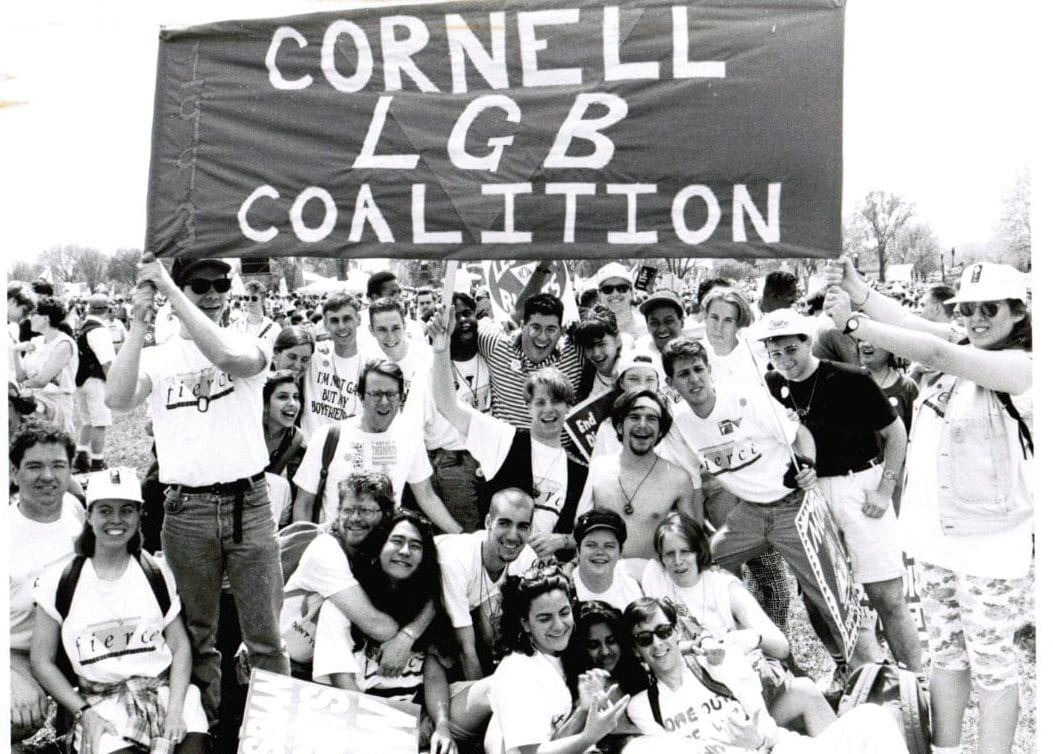Cornell University has long been at the leading edge of LGBTQ student activism. This digital exhibition traces that history, exploring key moments when students built new networks of support and fought back against sexual, gender, and racial oppression.
Even before the 1968 founding of the Student Homophile League—the second LGBTQ student group in the country—students at Cornell were protesting homophobic treatment by the administration and their peers and striving to create spaces of community. The Student Homophile Group would be renamed many times—Cornell Gay Liberation, Gay People at Cornell, Cornell LGBT Coalition. It would inspire additional groups as well: Cornellesbians, GBLOC (Gays, Bisexuals, and Lesbians of Color), and DASH (Direct Action to Stop Homophobia), among many others. Students also led Cornell in its responses to HIV/AIDS in the earliest years of the epidemic. They organized protests, dances, picnics, conferences, and safe sex workshops, covered the campus with pro-gay graffiti, and joined national marches. But most of all, LGBTQ student activists worked to build spaces of learning and belonging where they and others could better understand and be themselves.
The website is divided into two sections. “Timeline” traces Cornell’s LGBTQ history chronologically, based primarily on newspaper records. “Artifacts” focuses on objects from the archives as a lens on key instances of student activism. The Timeline provides an overview, while Artifacts takes a deeper look at additional case studies. Neither section is meant to provide a definitive history of LGBTQ life on campus but rather a foundation for future students to build on and add to.
The exhibition is co-curated by Professor Stephen Vider and students from multiple semesters of his seminar, “Making Public Queer History.” In spring 2020 and fall 2021, students mined the archives of Cornell’s LGBTQ history, drawing especially on the extensive personal and organizational papers preserved by the Human Sexuality Collection in Rare and Manuscript Collections of the Cornell University Libraries. Through posters, newspapers, diaries, and photographs, current and recent Cornell students uncover moments of creation and community, as well as conflict, to provide a new perspective not only on the history of LGBTQ students but their central role in reshaping the university, from the 1960s to now.
